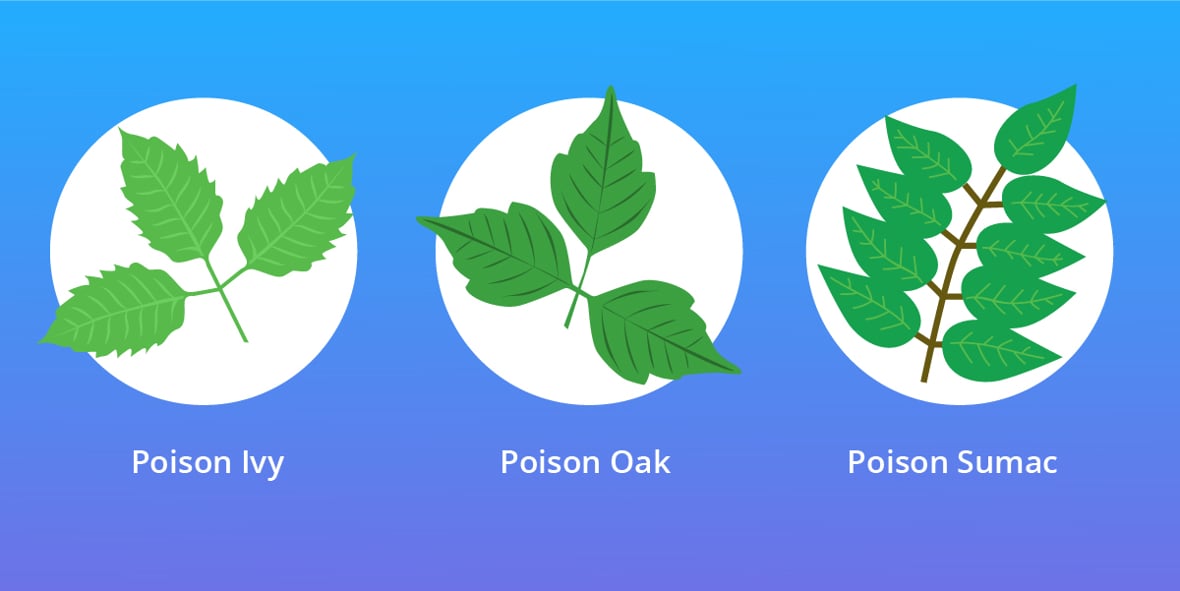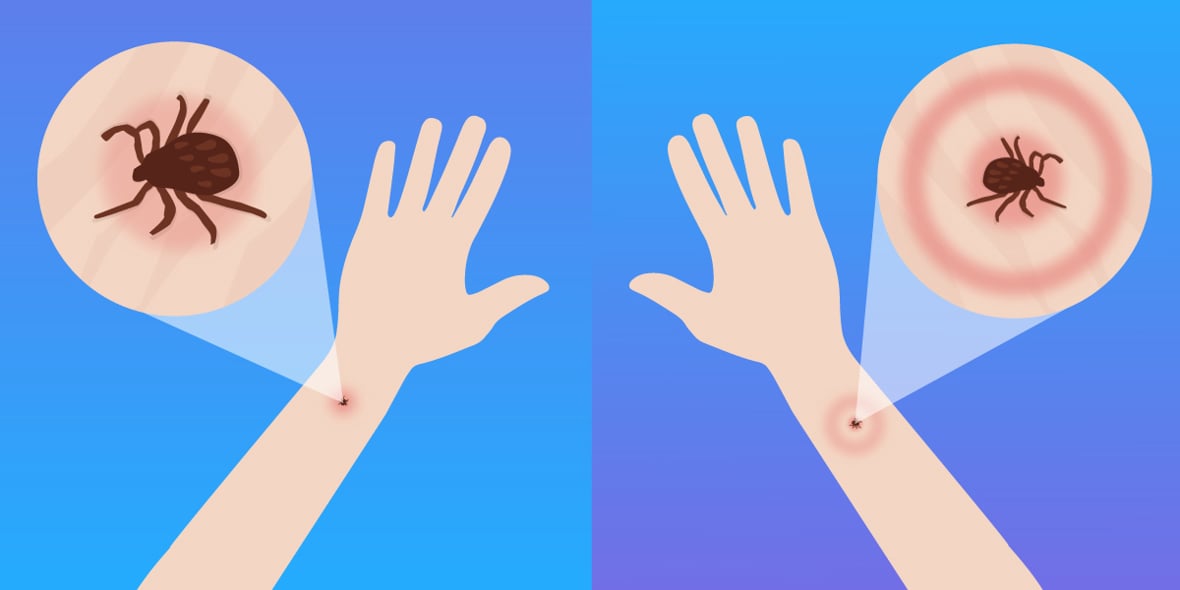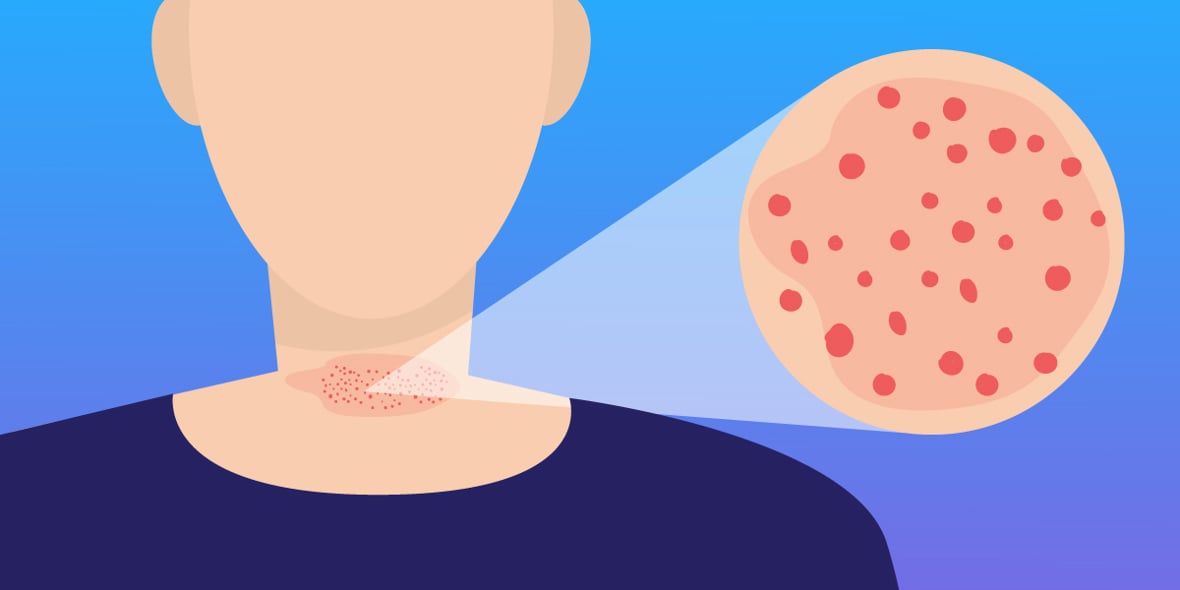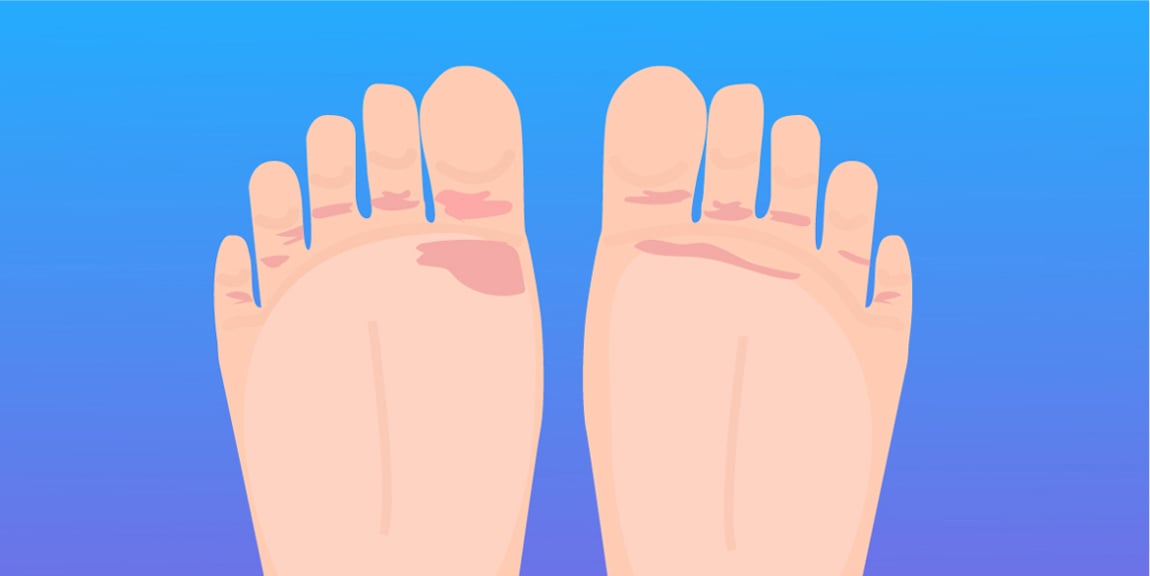5 Common Summer Rashes + How to Treat Them
In the summer months, many people enjoy the warmer weather by spending more time outside. This means there are several skin rashes to watch out for. Here are five common rashes to be aware of so you and your family can have a safe and healthy summer.
Poison ivy, poison oak, and poison sumac

Contact with poison ivy, poison oak, or poison sumac, can lead to an allergic skin reaction known as contact dermatitis. This itchy rash usually has bumps or blisters and can spread or swell depending on where it is on the body.
Poison ivy, oak, and sumac all release an oil that is called urushiol and causes the skin reaction. You may be exposed to this oil through direct contact with the plants, or indirect contact such as touching tools or inhaling particles when burning the plants.
How to prevent a rash: The best way to prevent poison ivy, oak, or sumac is to be able to identify the plants so you can avoid contact.
- Eastern poison ivy is a hairy, rope-like vine with three shiny green (or red in the fall) leaves. Western poison ivy is a low shrub with three lives that doesn’t form a vine. Poison ivy may have yellow or green flowers and berries.
- Poison oak is a shrub with clusters of three leaves, similar to poison ivy, and may have yellow or green flowers and berries.
- Poison sumac is a shrub that contains stems with 7-13 leaves in pairs and may have glossy, pale yellow, or cream-colored berries.
What to do if you have been exposed: Try not to worry. Simply wash your hands and rinse the skin with rubbing alcohol or dish soap. You can also apply wet compresses, calamine lotion, or hydrocortisone cream to soothe the skin. Taking an antihistamine will also help relieve itching.
If you have questions about how to treat a rash, see a doctor from home in minutes on Amwell. If you have a severe reaction or if the rash is on your face, call 911 or go to a hospital emergency room.
Tick bites

Depending on where you live, you may be at risk for tick-borne illness. Ticks are very small and can pass illnesses such as Lyme disease, southern tick-associated rash illness (STARI), Rocky Mountain spotted fever (RMSF), and more. These diseases are most common in both humans and animals.
Some symptoms of a tick-related illness include fever, chills, aches, pain, and a rash. One type of tick-related rash is a distinct “bull’s eye” circular shape around the bite. It is often warm but not painful.
How to prevent tick bites: To protect yourself from ticks, learn where they live. Ticks usually thrive in wooded areas with high grass. Try to avoid walking in these areas and check yourself, your child, and any pets after you return indoors. Be sure to check under the arms, in and around the ears, inside the belly button, the back of the knees, in and around the hair, between the legs, and around the waist.
What to do if you have a tick bite: It’s a good idea to talk to a doctor if you think you were bitten. Luckily, there are medical tests for tick-borne illnesses, and most can be treated at home. Early recognition of tick-related diseases can decrease the risk of serious symptoms. If you think you may have a tick bite, see a doctor on Amwell.
Heat rash

If you find red clusters of small blisters that look like pimples on the skin, you may have a heat rash. Heat rash usually occurs on the neck, chest, groin, or elbow creases. They are typically caused by blocked sweat ducts, which may happen in hot weather if you’re sweating or if you’re wearing tight-fitting clothes. Some people experience itchiness or a ‘prickly’ feeling with this rash.
How to prevent heat rash: Wear loose-fitting clothing and keep your skin cool.
What to do if you have a heat rash: Stay in a cool place, wear lightweight, loose clothing, and try to keep the rash dry. Baby powder can also help soothe itchiness.
Sunburns and sun poisoning

Sunburns are characterized by the reddening of skin due to sun exposure and can include blisters or skin peeling. You may get a sunburn if you spend time outdoors and are overexposed to sunlight or ultraviolet light without protection. While we all may get a sunburn from time to time, sun poisoning is a more severe reaction to the sun. Sun poisoning typically includes fever, chills, rash, and nausea, and may require medical attention.
How to prevent sunburn and/or poisoning: If you’re spending time in the sun, remember that there is no such thing as a healthy burn. Sunburns can lead to early aging of the skin and skin cancer. To protect yourself, wear a hat, sunglasses, and a broad-spectrum sunscreen SPF 30 or higher.
What to do if you have a sunburn and/or poisoning: Drink lots of water and take a cool shower. Wear loose clothing. Applying creams with vitamin C and E may help prevent skin damage.
Athlete’s foot
 Athlete’s foot or tinea pedis is a fungal infection of the skin on the feet. It is characterized by an itchy, scaly rash on your feet or between your toes.
Athlete’s foot or tinea pedis is a fungal infection of the skin on the feet. It is characterized by an itchy, scaly rash on your feet or between your toes.
How to prevent athlete’s foot: More people may experience athlete’s foot in the summer because it thrives in damp areas such as swimming pools, public showers, and locker rooms. You can prevent the infection by practicing good hygiene — keep your nails short and clean and wear sandals in public spaces.
What to do if you have athlete’s foot: If you think you may have athlete’s foot, keep your feet clean, dry, and cool. While over-the-counter creams can be useful for treatment, in some cases you may need oral medication or a prescription. You can talk to a doctor or dermatologist on Amwell to learn more about next steps for care.
Need medical advice? Have a telehealth visit with Amwell >